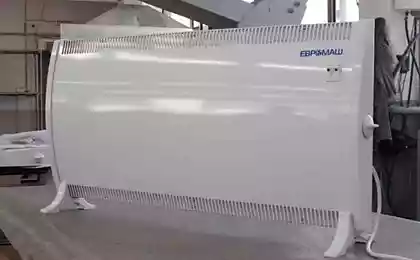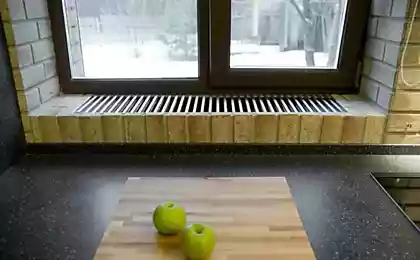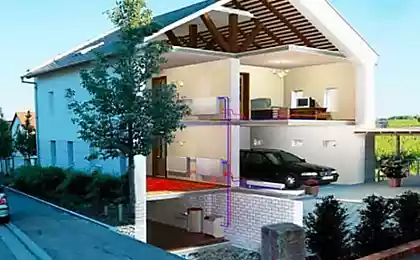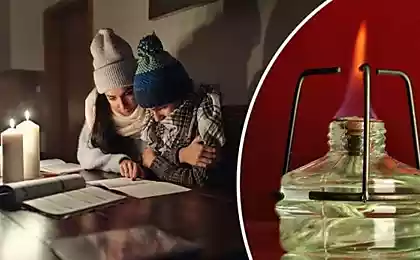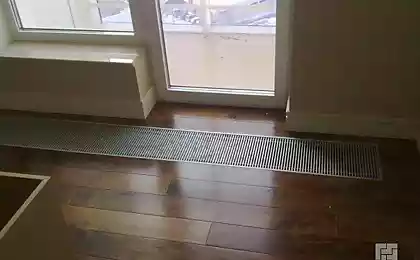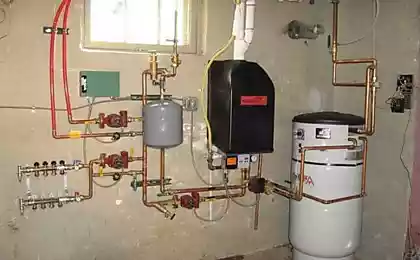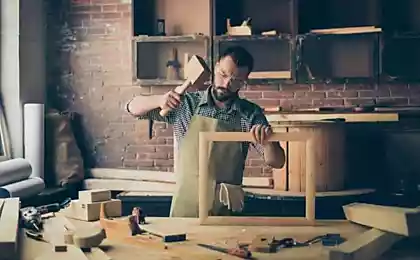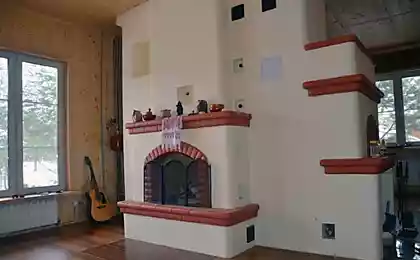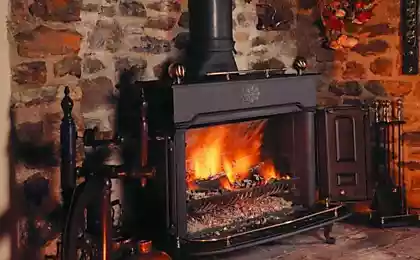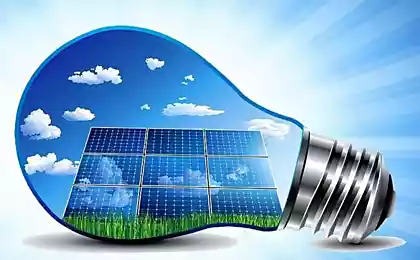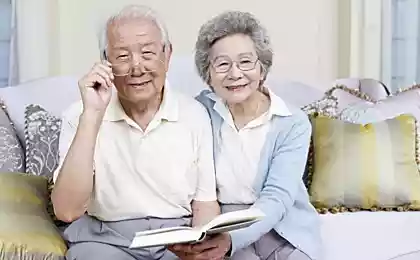441
Duct heaters: an alternative to warm flooring and radiators
It would seem, why reinvent the wheel if there are so many ways of heating. It's you and the usual wall mounted radiators and Underfloor heating, Yes, even "warm baseboards". But no, homeowners continue to look for alternatives.
And all because in areas with large panoramic Windows or glass structures with access to the terrace, for example, conventional radiators are installed, warm floors and baseboards simply aren't up to the task (not counting the fact that they are not "friends" with wooden floor covering) – the square glass is much more, and thus increase the overall heat losses. Fortunately, for such cases, invented Underfloor (duct) heaters – compact and effective solution to the problem!
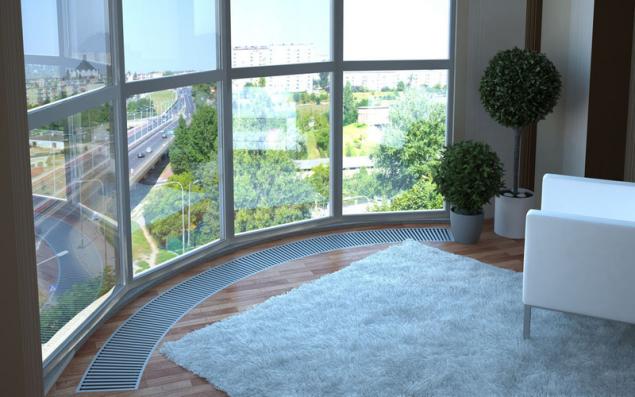
The main difference between convector radiator – in principle: while the radiator just heats the air, the heater causes it to circulate, and thereby more evenly distributes heat throughout the room. Of course, the option of heating more energy efficient, to create the same temperature in the room requires a smaller heating of the coolant and thus a reduced heating costs. Many European countries have long been using so-called "low temperature heating" when the temperature of the coolant does not exceed 40-50°C.
Duct water heaters are connected to a Central or Autonomous heating system on the example of the conventional radiators, the only difference is that they take place not on the wall, and inside the floor. That is, the eye is only visible upper guard, wherein the heater is located directly under the window, that is, in the coldest place of the room. And most importantly you retain full access to panoramic window or balcony door. Also this is a great solution for rooms with swimming pools, covered terraces and winter gardens. But for them, there are heaters with special drainage holes for condensed water drainage.
Duct water heaters consist of three main elements finned heater shell and decorative lattice. The heater in the current model runs of composite materials (for copper tube stick aluminum plate), and the body, or as it is called channel coupling, stainless steel, or galvanized, covered with powder paint. On sale are also models without the case – they are cheaper, but to reinforce them have their own.
Main данные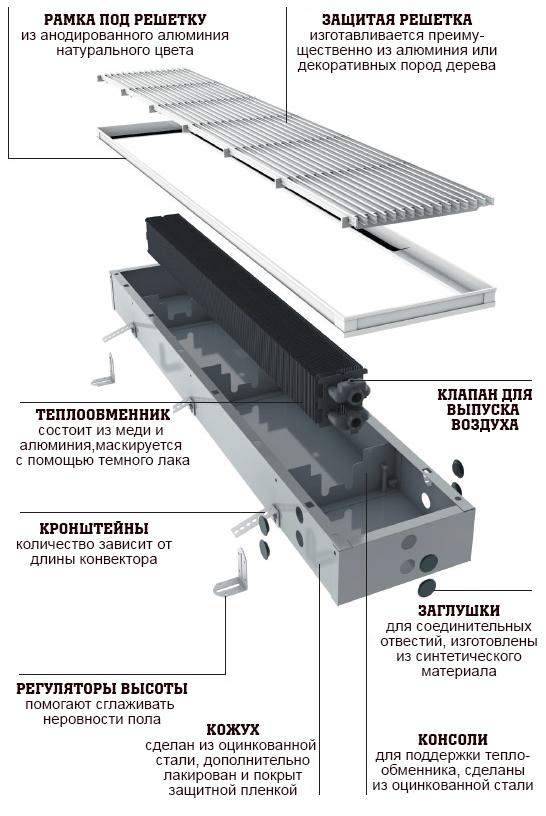
The channel sizes of the radiators in the enclosure in the range of 7.5-55 cm (height), 17-40 cm (width), 50-400 cm (length).
According to the method of connecting water heaters are divided into models with side and end connecting, by way of work on the model with natural and forced convection. The last are inside a special low-voltage fans, which increase the performance of the convector 3-5 times. So, if the heat capacity of the models with natural convection is in the range of 0.3 to 4 kW, the models forced with this parameter increases up to 11 kW. But the first are completely silent. With floor space up to 25 square meters is enough of the convector without the fan.
Requirements for montagutelli duct convectors embedded in the floor and occupy a deep niche, the place they need to determine prior to installation in the premises of the screed. The main point that you need to pay attention to is the continuity of the waterproofing layer that goes under the niche including. The very niche of a trench after the completion of rough-in work is covered by a layer of insulation, then plaster or stone floor tiles with increased strength. With the installation of convectors between them and the flooring, leave at least 10 cm for air circulation.
Convectors can also be used in tandem with the system "warm floor" — this is especially important on the ground and lower floors and in rooms of large dimensions. But in such cases special attention should be paid to automation, because each of these elements, latent heating requires its own control unit.
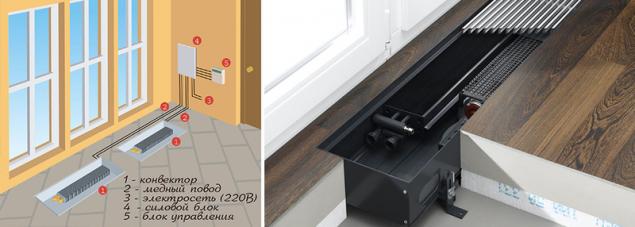
Features of use Since duct heaters are placed in a niche, for obvious reasons their locations require rather frequent and effective. General cleaning of a trench channel must be carried out before the beginning of each heating season, in the summer because there is accumulated a considerable amount of small debris that falls through the grating. But the main and worst enemy – the dust, because then the heater blows out back with a stream of warm air, thereby provoking the residents of an allergic reaction and cough. Therefore, when choosing the model of the convector be sure to ask how it is easy to maintain (some heaters are easily removed from the channels for cleaning).published
Author Rita Schulz, P. S. And remember, only by changing their consumption — together we change the world! © Join us at Facebook , Vkontakte, Odnoklassniki
Source: oselya.ua/practical_work/kanalnye-konvektory-alternativa-teplomu-polu-i-radiatoram
And all because in areas with large panoramic Windows or glass structures with access to the terrace, for example, conventional radiators are installed, warm floors and baseboards simply aren't up to the task (not counting the fact that they are not "friends" with wooden floor covering) – the square glass is much more, and thus increase the overall heat losses. Fortunately, for such cases, invented Underfloor (duct) heaters – compact and effective solution to the problem!

The main difference between convector radiator – in principle: while the radiator just heats the air, the heater causes it to circulate, and thereby more evenly distributes heat throughout the room. Of course, the option of heating more energy efficient, to create the same temperature in the room requires a smaller heating of the coolant and thus a reduced heating costs. Many European countries have long been using so-called "low temperature heating" when the temperature of the coolant does not exceed 40-50°C.
Duct water heaters are connected to a Central or Autonomous heating system on the example of the conventional radiators, the only difference is that they take place not on the wall, and inside the floor. That is, the eye is only visible upper guard, wherein the heater is located directly under the window, that is, in the coldest place of the room. And most importantly you retain full access to panoramic window or balcony door. Also this is a great solution for rooms with swimming pools, covered terraces and winter gardens. But for them, there are heaters with special drainage holes for condensed water drainage.
Duct water heaters consist of three main elements finned heater shell and decorative lattice. The heater in the current model runs of composite materials (for copper tube stick aluminum plate), and the body, or as it is called channel coupling, stainless steel, or galvanized, covered with powder paint. On sale are also models without the case – they are cheaper, but to reinforce them have their own.
Main данные

The channel sizes of the radiators in the enclosure in the range of 7.5-55 cm (height), 17-40 cm (width), 50-400 cm (length).
According to the method of connecting water heaters are divided into models with side and end connecting, by way of work on the model with natural and forced convection. The last are inside a special low-voltage fans, which increase the performance of the convector 3-5 times. So, if the heat capacity of the models with natural convection is in the range of 0.3 to 4 kW, the models forced with this parameter increases up to 11 kW. But the first are completely silent. With floor space up to 25 square meters is enough of the convector without the fan.
Requirements for montagutelli duct convectors embedded in the floor and occupy a deep niche, the place they need to determine prior to installation in the premises of the screed. The main point that you need to pay attention to is the continuity of the waterproofing layer that goes under the niche including. The very niche of a trench after the completion of rough-in work is covered by a layer of insulation, then plaster or stone floor tiles with increased strength. With the installation of convectors between them and the flooring, leave at least 10 cm for air circulation.
Convectors can also be used in tandem with the system "warm floor" — this is especially important on the ground and lower floors and in rooms of large dimensions. But in such cases special attention should be paid to automation, because each of these elements, latent heating requires its own control unit.

Features of use Since duct heaters are placed in a niche, for obvious reasons their locations require rather frequent and effective. General cleaning of a trench channel must be carried out before the beginning of each heating season, in the summer because there is accumulated a considerable amount of small debris that falls through the grating. But the main and worst enemy – the dust, because then the heater blows out back with a stream of warm air, thereby provoking the residents of an allergic reaction and cough. Therefore, when choosing the model of the convector be sure to ask how it is easy to maintain (some heaters are easily removed from the channels for cleaning).published
Author Rita Schulz, P. S. And remember, only by changing their consumption — together we change the world! © Join us at Facebook , Vkontakte, Odnoklassniki
Source: oselya.ua/practical_work/kanalnye-konvektory-alternativa-teplomu-polu-i-radiatoram
